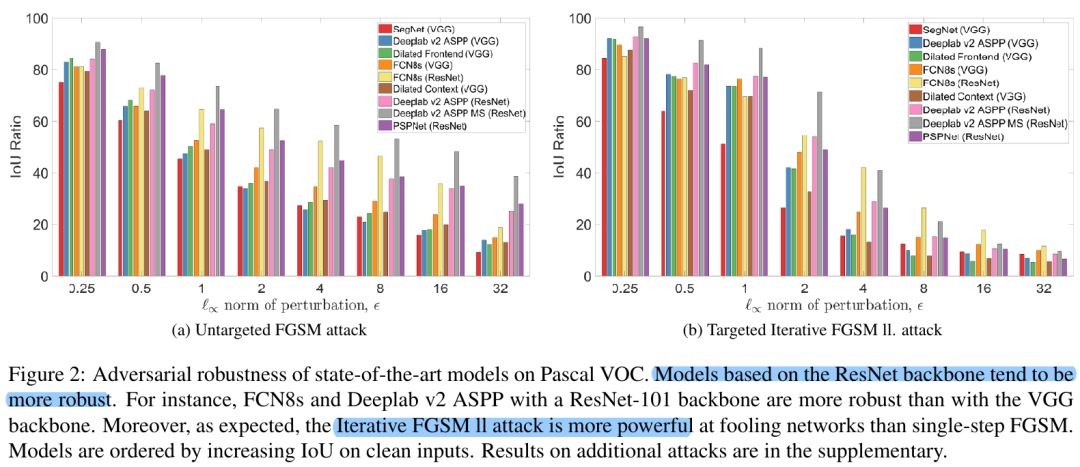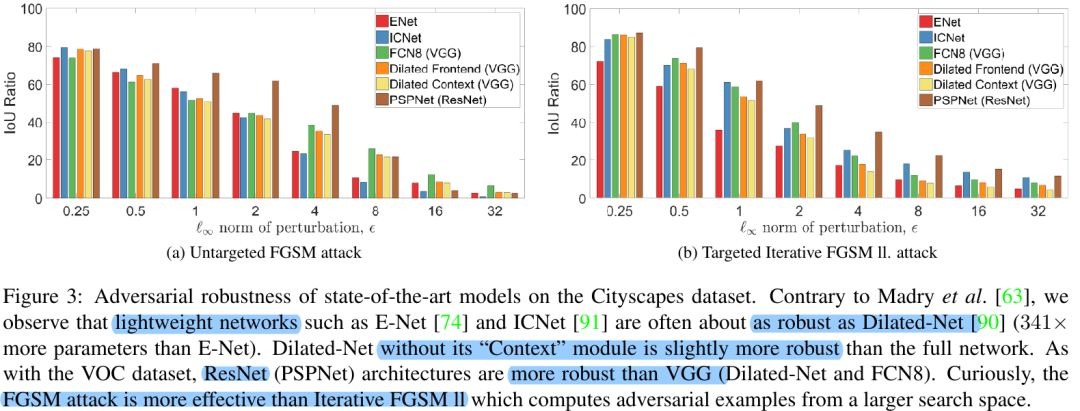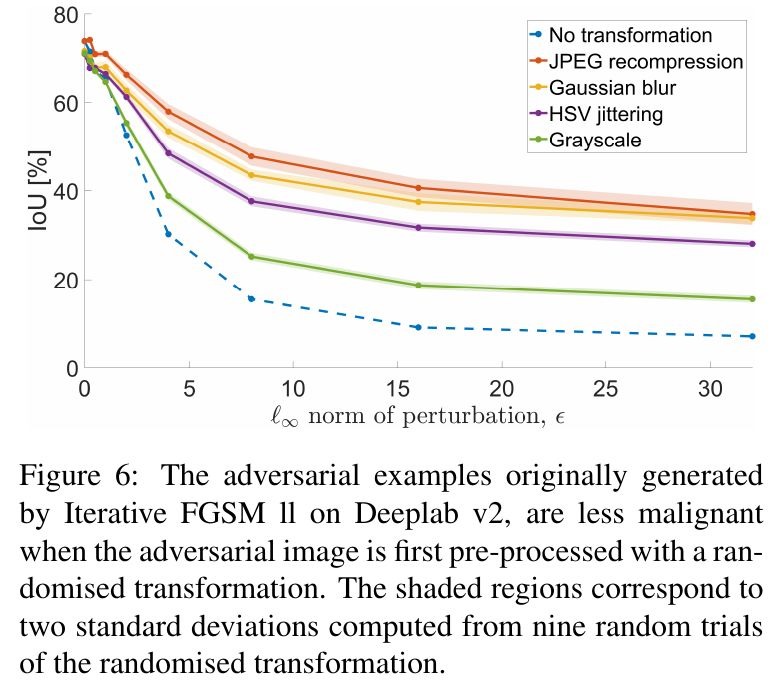Arnab A, Miksik O, Torr P H S. On the robustness of semantic segmentation models to adversarial attacks[C]//Proceedings of the IEEE Conference on Computer Vision and Pattern Recognition. 2018: 888-897.
1. Overview
1.1. Motivation
- adversarial examples has not been extensively studied on multiple, large-scale dataset and structureed prediction task
In this paper
- evaluate adversarial attacks on model semantic segmentation models, using two large-scale datasets
1.2. Observation
- DeeplabV2 more robust than other approach
- multiscale networks more robust to multiple different attacks and white-box attacks
- adversarial examples are less effective when processed at different scales
- input transformation only more robust to attack which not take these transformation into account
- mean filed CRF Inference increases robustness to untargeted adversarial attacks
2. Adversarial Examples
2.1. Solution

- y_t. target label
- c. positive scalar
- L-BFGS. expensive, require several minutes to produce a single attack
2.2. FGSM

- single-step, untargeted attack
- minimise the l_oo norm of the perturbation bounded by the parameter ε
2.3. FGSM II

- single-step, choose the target class as the least likely class predicted by network
2.4. Iterative FGSM

- iterative manner, untargeted
- clip(a,ε). make sure each element a_i of a in range [a_i -ε, a_i+ε]
- α. step-size
2.5. Iterative FGSM II

- iterative manner, targeted
- y_ll. least likely class predicted by the network
3. Adversarial Defenses and Evaluation
- training with adversarial examples generated by single-step methods conferred robustness to other single-step attacks with negligible performance difference to normally trained networks on clean inputs
- however, the adversarially trained network was still as vulnerable to iterative attacks as standard models
- currently, no effective defense to all adversarial attacks exist
- state-of-art methods should be preferred in settings where both accuracy and robustness are a priority
4. Experiments Set-up
- number of iteration. min(ε+4, ceil(1.25ε))
- step-size α=1
- l_oo of ε. {0.25, 0.5, 1, 2, 4, 8, 16, 32}
5. Experiments
5.1. The Robustness of Different Networks

- resnet-based (skip-connection) more robust to single-step attack
- none perform well on iterative FGSM II attack, but tend not to transfer to other models, less useful in practical black-box attacks
5.2. Model Capacity and Residual Connections

- lightweight models are affected similarly as heavyweight models
- adding context module of Dilated-Net onto the Front-end slightly reducdce robustness across all ε values on Cityscapes
5.3. Multiscale Processing

- perturbations generated from the multiscale and 100% resolutions of Deeplabv2 transfer the best
- multiscale version Deeplabv2 is the most robust to white-box attacks
- FCN8 with multiscale inputs is more rbust to white-box attacks
- adversarial attacks generated at a single scale, are no longer as malignant when processed at another
- network process images at multiple scales more robust
5.4. Input Transformation
- JPEG recompression
- Gaussian Blur
- HSV Jitter
- Grayscale


- JPEG and Gaussian Blur providing substantial benefits
5.5. Expectation over Transformation (EOT) Attack

- T. the distribution of transformation functions t

5.6. Transferability of Input Transformation

